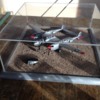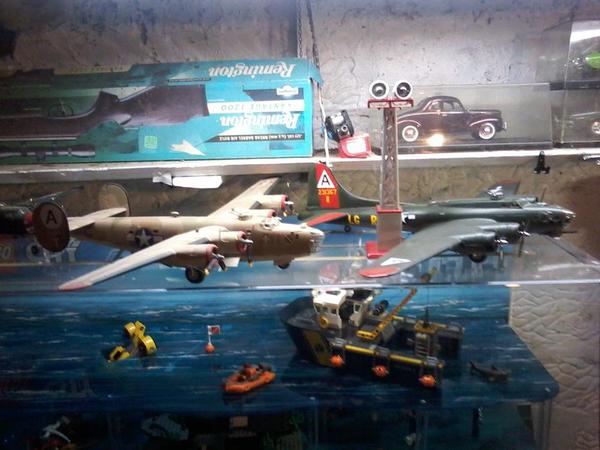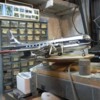
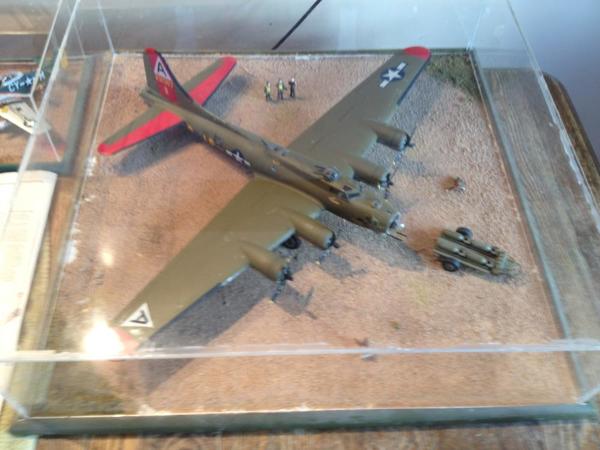

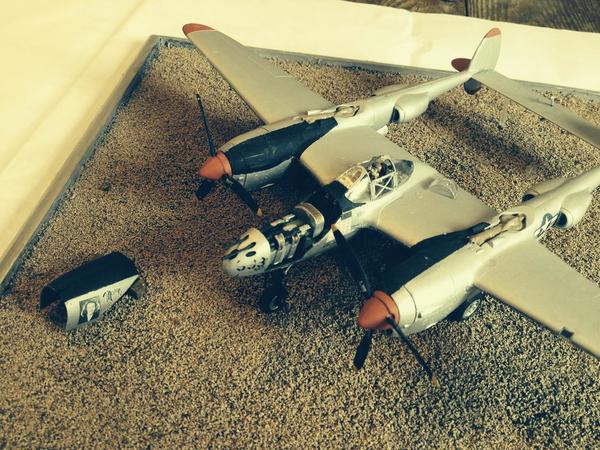 I have made some dioramas. Mine are planes, but of course this applies to trains as well. I bought the glue when and where I bought the sheet. It has since dried up and the pieces are in pieces. What glue do you use, and secondly what construction techniques can you share. I was thinking of taping close to the seams this time to keep a clean line. Thanks ahead, BK
I have made some dioramas. Mine are planes, but of course this applies to trains as well. I bought the glue when and where I bought the sheet. It has since dried up and the pieces are in pieces. What glue do you use, and secondly what construction techniques can you share. I was thinking of taping close to the seams this time to keep a clean line. Thanks ahead, BK
Replies sorted oldest to newest
Looks like you're giving Shep Paine some competition!
http://sheperdpaine.atspace.com/
Oh, how I admired his work when I was younger. Today, I still marvel at what he was able to accomplish with those kits.
We use acrylic solvent to adhere the pieces clear acrylic plastic to make a cover.
The full description:
1. We use cel-cast clear acrylic plastic. Extruded plastic requires way too much work to get clean edges.
2. The side pieces are cut to size, edge finished with a router and then sanded progressively down using 120, 180 and 220 grit sandpaper on a block. This creates a surface that would be polish-ready.
3. The side pieces are solvented together. We usually use a syringe to apply the solvent. Capilary action will draw the solvent in two coat the entire joint if the edge is prepared correctly.
4. We apply the top last. It usually has about a 1/8" overhang all around. Again, solvent is applied to the joint as pressure is applied to keep the top piece tight to the vertical side. Speed of application and distance of application depends on thickness of the material, size of the cover and experience/ability.
5. Once the solvent has cured, masking tape is put around the top of the side pieces, next to the joint with the top to protect the side from the bearing of an edging router bit. The top may also have to be recovered with masking tape to keep it from getting scratched by the bearing plate of the router.
Call if you need more details!
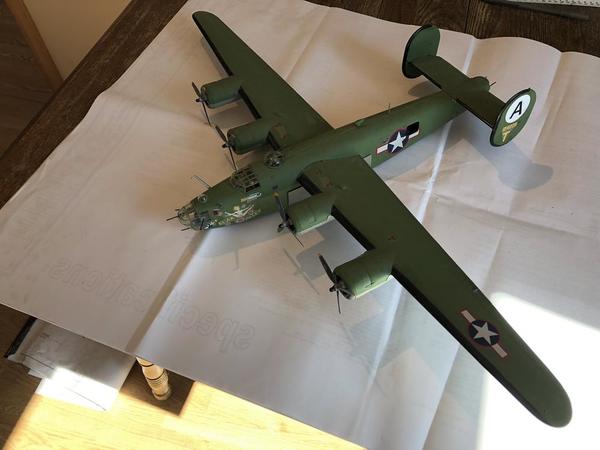

 Thanks Doug - that certainly sounds like the right way to do it. I was hoping for something easier to be honest. I’ll see how it goes. Philo - nice Flying Fortress. Here is my B24 I did this summer. Flak Alley. Dig that nose art. It’s a real plane. This is a Revell Germany model. The instructions are in 18 different languages. Pretty cool. This girl doesn’t need a display case. I’m am going to hang her. Which I may have just got the inspiration to do. All my models are 1/48 scale - O gauge. But this may be straying too far off topic. People watch this stuff you know. Trains, we are talking about display cases for train models. I was just adding context. Take it easy... Cheers, BK
Thanks Doug - that certainly sounds like the right way to do it. I was hoping for something easier to be honest. I’ll see how it goes. Philo - nice Flying Fortress. Here is my B24 I did this summer. Flak Alley. Dig that nose art. It’s a real plane. This is a Revell Germany model. The instructions are in 18 different languages. Pretty cool. This girl doesn’t need a display case. I’m am going to hang her. Which I may have just got the inspiration to do. All my models are 1/48 scale - O gauge. But this may be straying too far off topic. People watch this stuff you know. Trains, we are talking about display cases for train models. I was just adding context. Take it easy... Cheers, BK
Attachments
When I was doing this, edges were squared using a milling machine. Then one edge was placed in a pan containing methylene chloride for 30-40 seconds. Clamp to the adjoining piece. Let set for at least 8 hours. When all joints are made, any excess is milled off, then polished. The joints would become invisible after polishing.
Pete
Wow - this harder than I thought. Thanks.
fantastic stuff thanks for the learning experience we appreciate all scale modeling thank you for sharing with out input like yours we stagnate thanks
William, FWIW we worked with both acrylic and lexan (polycarbonate). Polycarbonate used for window glazing is virtually as smooth and clear as plexiglas but much easier to work and much harder to chip and crack. You can cut it with wood working saws, hand saws and table saws, and smooth it with sandpaper on a flat surface or a jointer if you have a wood shop. It also bonds easier with solvent cements.
If you had access to a sheet metal brake you can also bend it like aluminum assuming you use 1/8" or thinner.
If you don't have machine tools I would suggest trying polycarbonate first.
Pete
ToddModel posted:We use acrylic solvent to adhere the pieces clear acrylic plastic to make a cover.
The full description:
1. We use cel-cast clear acrylic plastic. Extruded plastic requires way too much work to get clean edges.
2. The side pieces are cut to size, edge finished with a router and then sanded progressively down using 120, 180 and 220 grit sandpaper on a block. This creates a surface that would be polish-ready.
3. The side pieces are solvented together. We usually use a syringe to apply the solvent. Capilary action will draw the solvent in two coat the entire joint if the edge is prepared correctly.
4. We apply the top last. It usually has about a 1/8" overhang all around. Again, solvent is applied to the joint as pressure is applied to keep the top piece tight to the vertical side. Speed of application and distance of application depends on thickness of the material, size of the cover and experience/ability.
5. Once the solvent has cured, masking tape is put around the top of the side pieces, next to the joint with the top to protect the side from the bearing of an edging router bit. The top may also have to be recovered with masking tape to keep it from getting scratched by the bearing plate of the router.
Call if you need more details!
Do you fix display case covers.
Will be glad to take a look at it. Can you email me a picture?
methylene chloride for 30-40 seconds.
Yummy!
My suggestion:
See if your local hardware store does glass and plexiglass work.
My local hardware store will cut the plexiglass and than glue it..... it will be done correctly. No glue where it does not belong.
or any glass shop.....
Gary




